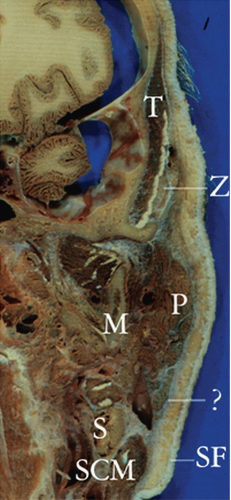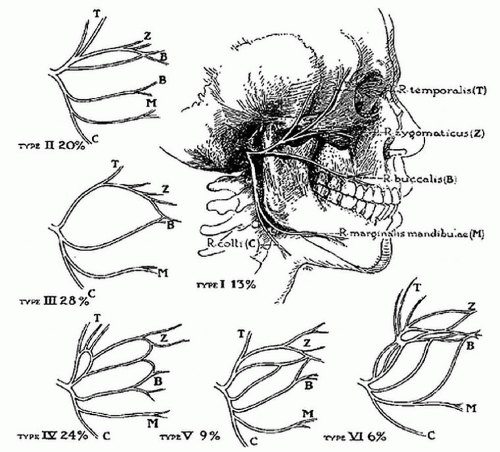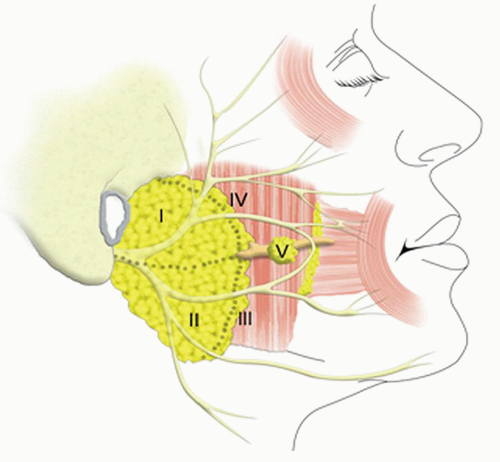Prevention of recurrence, which requires a complete removal of the tumor, ideally with a cuff of normal parotid tissue and without tumor seeding by spillage
Protection and preservation of the facial nerve unless the nerve is directly involved by a neoplasm (almost always malignant)
Prevention of Frey syndrome
Prevention of other complications, such as salivary gland fistula, hematoma, wound infection, and anesthesia of the skin
Optimal cosmetic results
cervical fascia covers the superficial aspect of the platysma muscle and splits to also cover its deep surface. It is attached to overlying skin with thin fibrous septa and continues on the face and scalp to extend all the way to the vertex where it covers the epicranius muscle.
TABLE 25.1 Etiology of Parotid Masses and a Concise Summary of Treatment | |||||||||||||||||||||||||||||||||||||||||||||||||||||||||||||||||||||||||||||||||||||||||||||||||||||||||||||||||||||||||||||||||||||||||||||||||||||||
|---|---|---|---|---|---|---|---|---|---|---|---|---|---|---|---|---|---|---|---|---|---|---|---|---|---|---|---|---|---|---|---|---|---|---|---|---|---|---|---|---|---|---|---|---|---|---|---|---|---|---|---|---|---|---|---|---|---|---|---|---|---|---|---|---|---|---|---|---|---|---|---|---|---|---|---|---|---|---|---|---|---|---|---|---|---|---|---|---|---|---|---|---|---|---|---|---|---|---|---|---|---|---|---|---|---|---|---|---|---|---|---|---|---|---|---|---|---|---|---|---|---|---|---|---|---|---|---|---|---|---|---|---|---|---|---|---|---|---|---|---|---|---|---|---|---|---|---|---|---|---|---|
| |||||||||||||||||||||||||||||||||||||||||||||||||||||||||||||||||||||||||||||||||||||||||||||||||||||||||||||||||||||||||||||||||||||||||||||||||||||||
The buccal ramus can originate from either the temporofacial or the cervicofacial division.
Branches located at the extremities of the nerve distribution receive fewer anastomosis with other branches.
The majority of anastomosis occurs between the buccal and zygomatic divisions, forming the so-called plexus.
The number of anastomosis decreases in caudal branches, with the marginal mandibular branch receiving anastomosis in only 6.3%.
There is no anastomosis between the cervical and other branches.
The anastomosis is more extensive when the buccal branch arises from the cervicofacial division.
Stay updated, free articles. Join our Telegram channel

Full access? Get Clinical Tree





